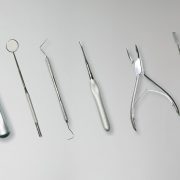Obstructive sleep apnea (OSA) management has evolved into a paradigm of interdisciplinary collaboration, with pulmonologists and dentists forming a critical partnership to address the multifaceted nature of this condition. This synergy leverages the pulmonologist’s expertise in airway physiology and the dentist’s proficiency in oral device mechanics, creating a comprehensive approach that improves therapeutic outcomes. The integration of oral appliance therapy (OAT) into OSA treatment protocols exemplifies how these specialties combine diagnostic precision, tailored interventions, and technological innovation to tackle a disorder affecting over 54 million adults in the U.S. alone.
The effective management of obstructive sleep apnea through a collaborative approach requires clear delineation of roles between pulmonologists and dentists, while maintaining open channels of communication throughout the treatment process.
The Pulmonologist’s Role
Pulmonologists serve as the primary diagnosticians in the sleep apnea treatment pathway. Their responsibilities begin with comprehensive patient evaluation, including sleep history, physical examination, and coordination of diagnostic testing. The diagnostic process typically involves polysomnography (PSG) or home sleep apnea testing to confirm the presence and severity of OSA. Following diagnosis, pulmonologists assess the patient’s overall health status, with particular attention to cardiovascular and metabolic comorbidities that frequently accompany OSA.
After establishing the diagnosis, the pulmonologist determines the appropriate treatment strategy based on disease severity, patient symptoms, comorbidities, and patient preferences. While continuous positive airway pressure (CPAP) remains the first-line treatment for moderate to severe OSA, pulmonologists must consider alternative options for patients who cannot tolerate or refuse CPAP therapy, initiating the collaborative relationship with dental sleep medicine specialists.
The pulmonologist’s ongoing role includes monitoring treatment efficacy, managing comorbid conditions, and coordinating care with dental colleagues. For patients using oral appliances, the pulmonologist evaluates treatment response through follow-up sleep studies and symptom assessment, providing feedback to dentists regarding the need for appliance adjustments47.
The Dentist’s Role
Dentists trained in sleep medicine play an essential role in the management of OSA, particularly in the implementation and monitoring of oral appliance therapy. Management of OSA with an oral appliance should be handled by a dentist who is trained and experienced in the overall care of oral health, temporomandibular joints, dental occlusion, and associated structures. Their expertise is crucial for patients who cannot tolerate CPAP or for whom oral appliances are determined to be an appropriate first-line treatment option.
The dentist’s responsibilities include comprehensive oral evaluation, selection of appropriate oral appliance design, custom fitting, and ongoing monitoring of dental side effects. Before initiating oral appliance therapy, dentists must assess the patient’s dentition, periodontal health, and temporomandibular joint function to ensure suitability for treatment. They then select and fit a custom oral appliance, often a mandibular advancement device (MAD), which requires precision to maximize effectiveness while minimizing potential side effects.
Following appliance delivery, dentists manage the titration process, gradually adjusting the device to achieve optimal mandibular advancement without causing discomfort or temporomandibular joint issues. They also monitor for potential dental side effects of long-term oral appliance use, such as occlusal changes or temporomandibular disorders, implementing strategies to mitigate these effects when they occur.
The Framework of Collaboration: Roles and Responsibilities
Diagnostic Synergy
- Pulmonologists initiate OSA management by confirming diagnoses through polysomnography or home sleep apnea tests, interpreting metrics such as the apnea-hypopnea index (AHI) and oxygen desaturation patterns.
- Dentists contribute by screening patients for craniofacial risk factors-retrognathia, narrow palates, or dental malocclusions-that predispose individuals to airway collapse. For example, scalloped tongue edges or severe bruxism often prompt dentists to refer patients for sleep studies.
Therapeutic Integration
- Once diagnosed, pulmonologists determine whether patients qualify for OAT based on OSA severity, comorbidities, and CPAP tolerance.
- Dentists then conduct cephalometric analyses and dental impressions to design custom mandibular advancement devices (MADs). These devices protrude the mandible forward, enlarging the retrolingual airway space by up to 30%, thereby reducing pharyngeal collapsibility.
- Post-fitting, pulmonologists monitor efficacy via follow-up sleep studies, while dentists adjust device positioning to balance therapeutic advancement with patient comfort-a process requiring iterative communication.
Case Studies Demonstrating Collaborative Success
Case 1: Multimodal Therapy for Complex OSA
A 52-year-old male with severe OSA (AHI 42 events/hour) and CPAP intolerance was co-managed by a pulmonologist and dental sleep specialist. The pulmonologist prescribed nocturnal oxygen supplementation to address hypoxemia, while the dentist fabricated a MAD with a 70% mandibular advancement.
After 3 months, in-lab polysomnography showed an AHI reduction to 14 events/hour. However, residual supine-related apneas prompted the addition of positional therapy (a vibrating shirt to discourage supine sleep), achieving a final AHI of 8 events/hour. This case underscores how layered interventions, guided by shared data, optimize outcomes.
Case 2: Novel Oral Appliance for High Nasal Resistance
A 2024 study evaluated a novel oral appliance (Oventus O2Vent®) incorporating a built-in oral airway bypass in 39 OSA patients. Participants with high nasal resistance (>3 cm H2O/L/s) saw comparable AHI reductions (61%) to those with normal resistance (40%).
For example, a 60-year-old female with chronic rhinitis and an AHI of 35 experienced a drop to 12 events/hour using the device, avoiding CPAP. The appliance’s design circumvents nasal obstruction by channeling airflow directly through the oral cavity, demonstrating how device innovation expands treatment eligibility.
Innovations in Oral Appliance Technology
Hybrid Devices Combining MAD and CPAP
Emerging devices like the “Aligner Sleep Appliance” merge mandibular advancement with CPAP integration. In a 2024 case, a patient with severe OSA (AHI 48) and dentofacial instability used a clear aligner system paired with a micro-CPAP blower embedded in the appliance. This approach reduced therapeutic CPAP pressure from 12 cm H2O to 8 cm H2O, enhancing comfort while maintaining efficacy. Such innovations acknowledge that OSA often requires multipronged solutions, particularly in patients with coexisting maxillomandibular deficiencies.
Telemonitoring and Adjustable MADs
Remote monitoring systems now enable real-time titration of MADs. For instance, the Prosomnus® EVO device transmits intraoral pressure data to pulmonologists via Bluetooth, allowing them to remotely adjust mandibular protrusion in 0.2 mm increments. In a 2023 trial, this method achieved optimal advancement in 78% of patients within 2 weeks, compared to 6 weeks with traditional in-office titrations.
Conclusion: Toward Personalized OSA Management
The pulmonologist-dentist partnership exemplifies precision medicine in OSA care. Understanding these distinct yet complementary responsibilities helps ensure comprehensive patient care and optimal outcomes in patients with sleep disordered breathing. Through continued innovation and shared decision-making, these specialties are redefining success in sleep apnea management.
References
- https://www.journalpulmonology.org/en-treatment-obstructive-sleep-apnea-syndrome-avance-S253104372400093X
- https://www.aadsm.org/docs/jdsm.7.10.2024.cr2.pdf
- https://dentalsleeppractice.com/2676/
- https://www.sciencedirect.com/science/article/pii/S253104372400093X
- https://www.aadsm.org/docs/jdsm.10.10.2022.sa1.pdf
- https://jcsm.aasm.org/doi/10.5664/jcsm.8244
- https://journals.physiology.org/doi/full/10.1152/japplphysiol.00393.2020
- https://www.aadsm.org/docs/jdsm.7.10.2021.sa1.pdf
- https://aadsm.org/docs/JDSM.03.01.29.pdf
- https://pmc.ncbi.nlm.nih.gov/articles/PMC3716676/
- https://www.amwa-doc.org/event/aawd-sleep-apnea-webinar/
- https://jcsm.aasm.org/doi/10.5664/jcsm.4858
- https://pmc.ncbi.nlm.nih.gov/articles/PMC11937734/
- https://pmc.ncbi.nlm.nih.gov/articles/PMC9736872/




















Comments